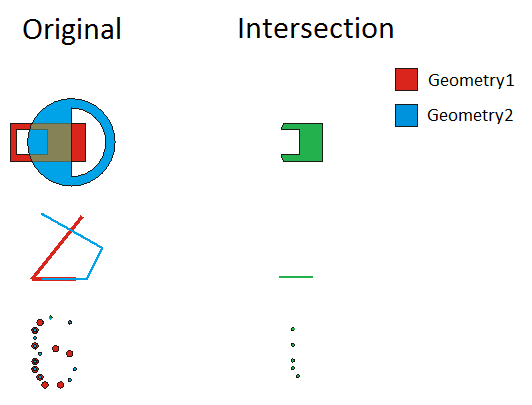Parameters
- geometry1
- The first geometry.
- geometry2
- The second geometry.
Return Value
A geometry that represents the intersection of the two input geometries. The dimension of the returned geometry will be the lowest dimension of the input geometries. For example, if geometry1 is a MapPoint and geometry2 is a Polyline, the returned geometry will be a MapPoint. If both input geometries are envelopes, then an envelope will be returned. If one input geometry is an envelope and the other is a polygon, then a polygon will be returned. If the dimension of the intersection is not equal to the lowest dimension of the input geometries, an empty geometry will be returned. For example, suppose that geometry1 is a Polyline and geometry2 is a Polyline, and they cross each other at two points. The intersection is a Multipoint, but an empty Polyline will be returned. In this case, if you want the returned geometry to be the Multipoint where the input geometries intersect, use Intersection(Geometry,Geometry,GeometryDimensionType).
